#maría luisa de borbón
Photo


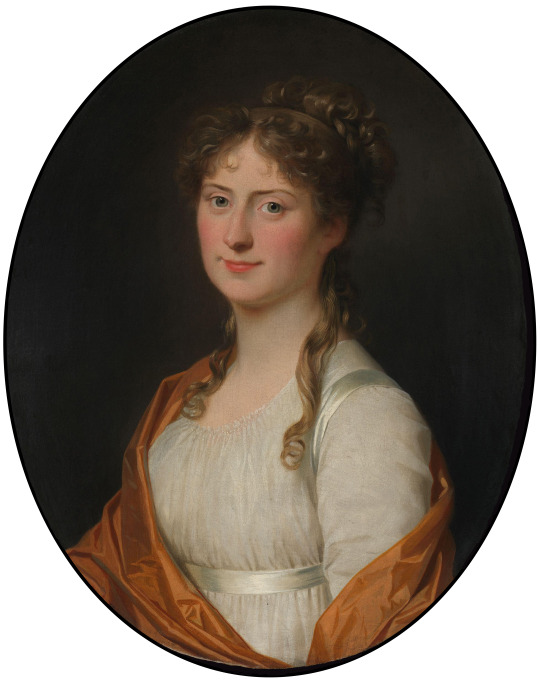

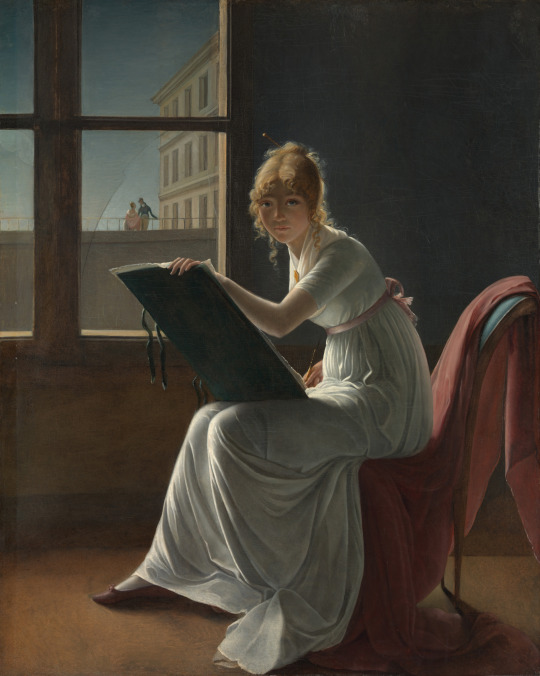
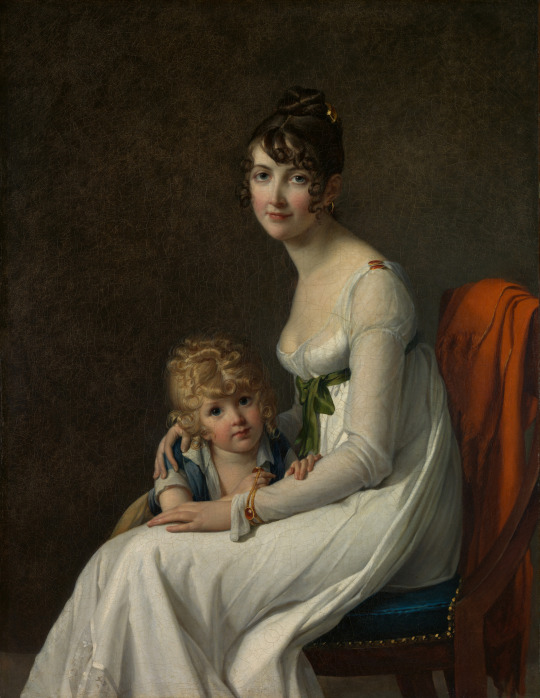
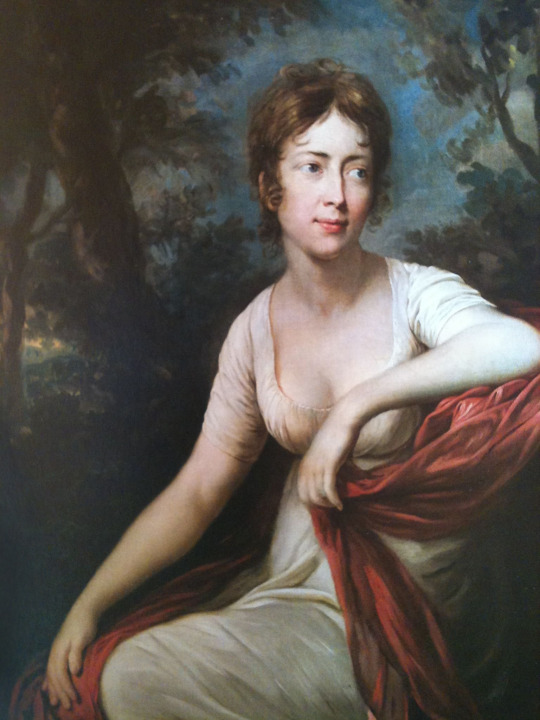
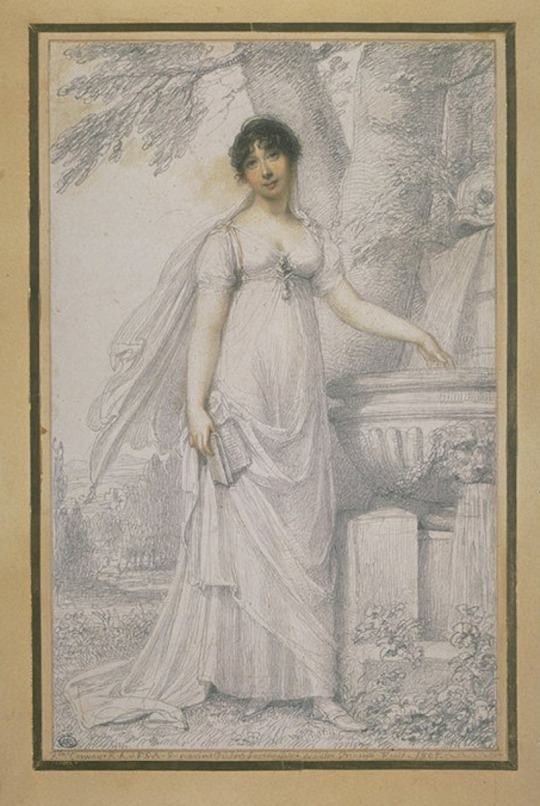


Early 1800s Directoire fashion -
Top left: ca. 1800 María Luisa de Borbón y Vallabriga by Francisco de Goya y Lucientes (Galleria degli Uffizi - Firenze, Toscana, Italy). From Wikimedia; increased exposure 2030X3490 @72 833kj.
Top right: 1800 Condesa de Chinchon by Francisco de Goya y Lucientes (Museo Nacional del Prado - Madrid, Spain). Probably from Wikimedia 2015X3051 @310 1.6Mj.
Second row: 1801 Fru Elisabeth Sophie Chrystie, f. Krefting by Jens Juel (Nasjonalmuseet - Oslo, Norway). From their Web site; fixed spots & edges w Pshop 4928X6214 @150 6.7Mj.
Third row left: 1801 Sophie Crouzet by Louis Hersent (Cleveland Museum of Art, Cleveland, Ohio, USA). From their Web site 2206X2752 @144 5.8Mp.
Third row right: 1801 Marie Joséphine Charlotte du Val d'Ognes by Marie Denise Villers (Metropolitan Museum of Art). From their Web site 3020X3780 @300 3.2Mj.
Fourth row: 1802 Madame Philippe Panon Desbassayns de Richemont (Jeanne Eglé Mourgue, 1778–1855) and Her Son, Eugène (1800–1859) by Marie Guillelmine Benoist (Meropolitan Museum of Art). From their Web site 2934X3795 @300 5Mj.
Fifth row left: 1803 Friederike von Helldorf by Anton Graff (location ?). From twitter.com/Make_u2_happy/status/1327328578569179136/photo/1; fixed 3 spots and suppressed veiling reflection lower left w Pshop 1636X2048 @72 694kj.
Fifth row right: 1803 Lady Airey, née Catherine Talbot, femme de Sir George Airey, officier anglais by Richard Cosway (Musée du Louvre - Paris, France). From their Web site; fit to screen 804X1200 @72 342kj,
Sixth row: ca. 1804 Louisa Montagu, Viscountess Hinchingbrook by Thomas Lawrence and studio (auctioned by Christie's). From Wikimedia 1951X3200 @33.81 817kj.
Bottom: 1804 (published) Lavinia (Bingham), Countess Spencer by Charles Turner after Sir Martin Arthur Shee (National Galleries of Scotland - Edinburgh, UK). From their Web site 1920X2552 @300 2.6Mj
#early 1800s fashion#Directoire fashion#María Luisa de Borbón#Francisco de Goya y Lucientes#feathered headdress#scoop neckline#quarter length sleeves#arm band#waist band#close skirt#Condesa de Chinchon#Fru Elisabeth Sophie Chrystie#Jens Juel#wavy hair#bun#wrap#Sophie Crouzet#Louis Hersent#puffed sleeves#Marie Joséphine Charlotte du Val d'Ognes#Marie Denise Villers#natural waistline#Madame Philippe Panon Desbassayns de Richemont#Marie Guillelmine Benoist#long tight sleeves#Friederike von Helldorf#Anton Graff#Lady Airey#Richard Cosway#Louisa Montagu
15 notes
·
View notes
Text

Portrait of Queen Maria Luisa of Parma. By Joseph Flaugier.
#joseph flaugier#monarquía española#reino de españa#reyes de españa#reina de españa#maría luisa de parma#viva la reina#casa de borbón#borbone di parma#ducato di parma#ducato di parma e piacenza#kingdom of spain#house of bourbon#royalty
6 notes
·
View notes
Text
Emdt Historical Tournament
The previous weeks I have been doing sone polls to sellect the best historical character from the series, well, they formed part of a tournament I have been planning, that was a knockout round, the true one starts now.
The pairs for each duel has been selected randomly.
Here's the schedule of the following duels if you want to take notes for the date of each duel:
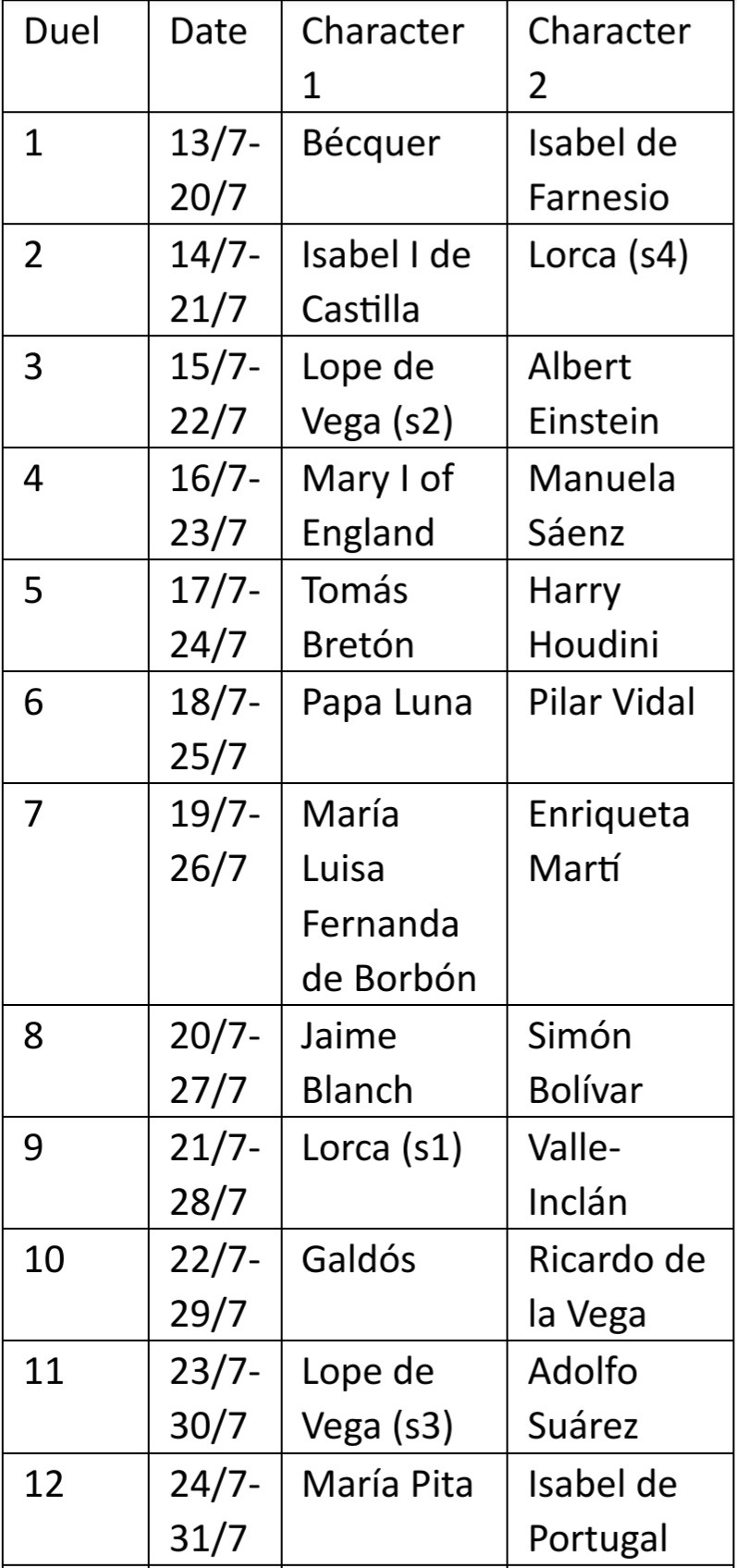

First round
Duel 1 ll Duel 2 ll Duel 3 ll Duel 4 ll Duel 5 ll Duel 6 ll Duel 7 ll Duel 8 ll Duel 9 ll Duel 10 ll Duel 11 ll Duel 12
Second Round (Quarters)
Duel 13 ll Duel 14 ll Duel 15 ll Duel 16 ll Duel 17 ll Duel 18
Third Round (Semifinal I)
Duel 19 ll Duel 20 ll Duel 21
Forth round (Semifinal II)
Duel 22 ll Duel 23 ll Duel 24
Fifth round (Final)
Duel 25
#el ministerio del tiempo#emdt#emdt polls#emdt historical tournament#gustavo adolfo bécquer#isabel de farnesio#isabel i de castilla#federico garcía lorca#lope de vega#albert einstein#mary i of england#manuela saénz#tomás bretón#harry houdini#papa luna#pilar vidal#maría luisa fernanda de borbón#enriqueta martí#jaime blanch#simón bolívar#ramón maría del valle inclán#ricardo de la vega#benito pérez galdós#adolfo suárez#maría pita#isabel de portugal
7 notes
·
View notes
Text
F. de Madrazo,
1847, Leocadia Zamora y Quesada.
1851, La infanta Luisa Fernanda de Borbón, Duquesa de Montpensier.
1852, María Josefa del Águila Ceballos, Marquesa de Espeja


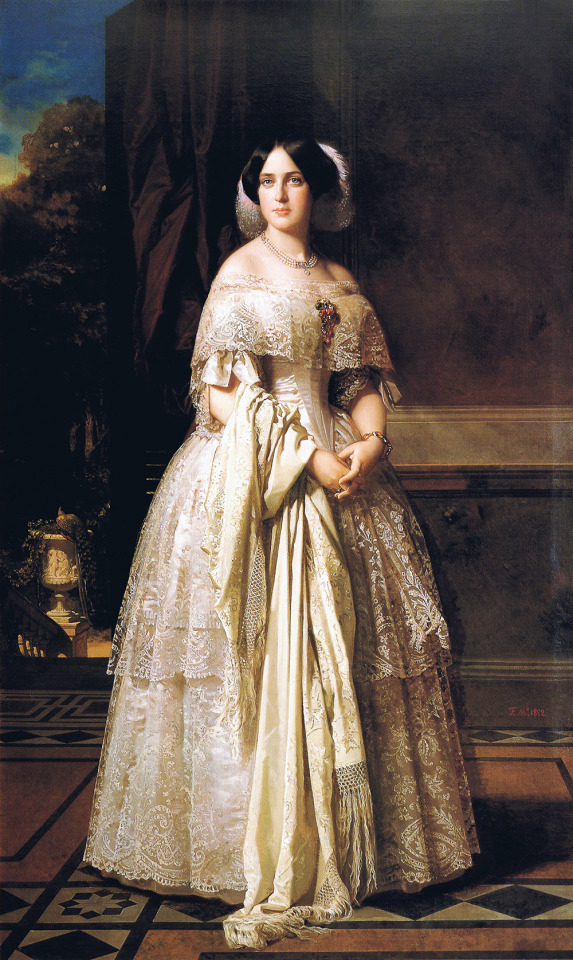
#federico de madrazo#madrazo y kuntz#traditional art#classic art#art history#traditional painting#classical art#oil painting#art detail#art#art details#19th century art#arte#pintura#artista#modern art#1800s art#20th century art#academic art#contemporary art#fine art
16 notes
·
View notes
Text


Queen Isabella II of Spain and her daughter by Franz Xaver Winterhalter, 1852
Isabella II (Spanish: Isabel II, María Isabel Luisa de Borbón y Borbón-Dos Sicilias; 10 October 1830 – 9 April 1904) was Queen of Spain from 1833 until her deposition in 1868. She is the only queen regnant in the history of unified Spain.
Isabella was the elder daughter of King Ferdinand VII and Queen Maria Christina. Shortly before Isabella's birth, her father issued the Pragmatic Sanction to revert the Salic Law and ensure the succession of his firstborn daughter, due to his lack of a son. She came to the throne a month before her third birthday, but her succession was disputed by her uncle Infante Carlos (founder of the Carlist movement), whose refusal to recognize a female sovereign led to the Carlist Wars.
#wmmap#who made me a princess#sbapod#suddenly became a princess one day#parallels#athanasia de alger obelia#paintings
10 notes
·
View notes
Text

Luis Paret Y Alcázar (Spanish, 1746-1799)
Royal Couples, 1770
Museo Nacional del Prado
This canvas depicts an equestrian event that took place at the Palace of Aranjuez in 1770. It was attended by Charles III and Princess María Luisa, his daughter-in-law, who are to be seen in the second box adjoining the palace façade, and by a crowd of subtly individualised figures. On horseback at the forefront of the pairs of riders are Prince Carlos and the Infantes Gabriel and Luis Antonio de Borbón, as well as the Duke of Medina Sidonia.
#Luis Paret Y Alcázar#spanish art#spanish#hispanic#latin#european art#european history#art#royal couples 1770#1700s#fine art#classical art#europe#european#oil painting#fine arts#europa#mediterranean#history#landscape#aesthetic#aesthetic art
21 notes
·
View notes
Text
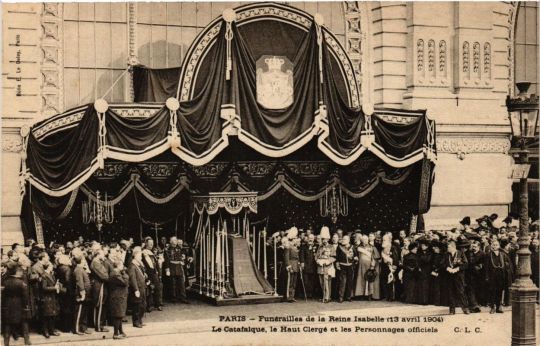
1904 funeral of Queen María Isabel Luisa de Borbón y Borbón-Dos Sicilias in Paris
French vintage postcard
#vintage#funrailles#tarjeta#old#briefkaart#reine#isabelle#postcard#la#photography#postal#carte postale#catafalque#sepia#ephemera#historic#paris#de#ansichtskarte#postkarte#postkaart#photo
6 notes
·
View notes
Text

Venus italiana de Antonio Canova (Italia, Possagno, 1 de noviembre de 1757 - Venecia, 13 de octubre de 1822)
Descripción
Fecha: 1812
Museo: Palacio Pitti
Recopilación: Galería Palatina
Colocación: Salón de Venus
Técnica: Mármol
Dimensiones: Altura 171,5 cm
Inventario: 1912 n. 878
En 1802, de paso por Florencia y en el apogeo de su fama, Antonio Canova recibió del rey de Etruria, Ludovico di Borbone, el encargo de realizar una copia de la Venus de los Medici, la escultura de mármol del siglo I a.C. que, ya expuesta en el centro de la Tribuna de los Uffizi, el 11 de septiembre del mismo año fue requisado por las autoridades francesas para ser destinado al Louvre. Inicialmente, reacio a la idea de la réplica, el escultor veneciano, finalmente aceptó, atraído tanto por la propuesta de sustituir una obra maestra, como por la fuerte connotación patriótica que la empresa había adquirido inmediatamente. Sin embargo, mientras tanto Canova tuvo la idea de desafiar la antigua estatua con una Venus de pie, esta vez de su propia invención. Este prestigioso encargo le fue confirmado en 1805 por la reina regente de Etruria, María Luisa de Borbón y la idea de una reproducción del antiguo acabó quedando de lado. En 1809 la nueva soberana Elisa Baciocchi, recién instalada como Gran Duquesa de Toscana por su hermano Napoleón, logró convencer al emperador de que pagara a Canova los 25.000 francos acordados y el 29 de abril de 1812 la Venus cursiva llegó a la tribuna de la Galería Imperial de Florencia, pero, en lugar de sobre el pedestal de la estatua de los Medici traída a Francia, se colocó sobre una nueva base giratoria, para resaltar la novedad de la creación. De hecho, la divinidad Canova se desvió del ilustre modelo, siendo representada en el momento en que ella se seca modestamente después de salir del baño, con el jarrón de ungüentos perfumados a sus pies. La nueva escultura, cuya modernidad se destacó inmediatamente en comparación con el antiguo prototipo, tuvo un enorme éxito, que la convirtió en objeto de una vasta literatura crítica y protagonista de numerosos sonetos, incluido el de Giovanni Rosini, que la bautizó con el título de “Itálica”. Ugo Foscolo, comparándola con la Venus de los Medici, la definió como "una mujer hermosa, capaz de enamorarte, mientras que la antigua es una diosa impasible, aunque hermosa". En la obra de Canova, de hecho, la gracia natural se acentúa frente a la convencionalidad de la belleza ideal expresada en el ejemplo helenístico, gracias a la postura más dinámica y a las dimensiones ligeramente mayores, que la hacen tan alta como una mujer real.
Tras la caída de Napoleón, en 1815 Canova viajó a París como emisario del Estado pontificio para negociar la restitución de las obras robadas por Bonaparte y la antigua Venus volvió a ocupar su lugar en la Tribuna, mientras que la Itálica, ahora derrocada, fue trasladada a el Palacio Pitti.
Texto por Elena Marconi; Arianna Borgo
Información de la web de la Gallerie degli Uffizi, fotografías de mi autoría.
4 notes
·
View notes
Text

✵ September 12, 1990 ✵
Doña María de Fátima Simoneta Luisa Gómez-Acebo y Borbón & José Miguel Fernández Sastrón
6 notes
·
View notes
Text
PREDICTIONS of those in attendance of The Princess of Asturias's 18th birthday Celebrations
The Princess of Asturias's birthday celebration is meant to be a private affair, thus likely there will be limilted international affairs involved and it will primarily be a family affair, if anything we might get The Greeks as Queen Sofia is closely connected to them, and possibly the Bulgarian royals, especially with Prince Christian's celebrations just the week before.
Spain
King Felipe VI
Queen Letizia
Queen Sofia
King Juan Carlos
Infanta Elena, The Duchess of Lugo
Don Felipe Juan Froilán de Todos los Santos de Marichalar y Borbón, Lord of Tejada
Doña Victoria Federica de Todos los Santos de Marichalar y Borbón, Lady of Tejada
Infanta Cristina
Don Juan Valentín Urdangarin y Borbón
Don Pablo Nicolás Sebastián Urdangarin y de Borbón
Don Miguel Urdangarin y Borbón
Doña Irene Urdangarin y Borbón
Doña María de Fátima Simoneta Luisa Gómez-Acebo y Borbón(who's also celebrating her birthday)
Don Juan Filiberto Nicolás Gómez-Acebo y Borbón, 3rd Viscount of La Torre
Don Bruno Alejandro Gómez-Acebo y Borbón
Don Luis Beltrán Ataúlfo Alfonso Gómez-Acebo y Borbón
Don Fernando Humberto Gómez-Acebo y Borbón
Infanta Margarita of Spain, Duchess of Soria, 2nd Duchess of Hernani, Grandee of Spain
Don Carlos Emilio Juan Zurita y Delgado, Duke of Soria and Hernani
Don Alfonso Juan Carlos Zurita y de Borbón, Grandee of Spain
Doña María Sofía Emilia Carmen Zurita y de Borbón, Grandee of Spain
Queen Letizia's family
Jesús José Ortiz Álvarez
María de la Paloma Rocasolano Rodríguez
Telma Ortiz Rocasolano
Amanda Rocasolano
Carla Vigo Rocasolano
1 note
·
View note
Text

Maria Luisa de Parma, Queen Consort of Spain
Artist: Anton Raphael Mengs, (German, 1728 - 1779)
Genre: Portrait
Date: 1765
Collection: Museo de Prado, Madrid, Spain
María Luisa of Parma, Princess of Asturias
Mengs painted these portraits of the heirs to the Spanish throne -the prince and princess of Asturias, Carlos de Borbón and Maria Luisa of Parma- on the occasion of their wedding. As the daughter of Philip I, Duke of Parma, and Louise Isabelle of France, and thus granddaughter of Kings Philip V and Louis XV, Maria Luisa was Queen Consort of Spain between 1788 and 1808.
She wears a light-colored dress with green and white flowers and an open neck. The insignia of the Order of the Starred Cross of the Holy Empire rests on her bosom, and small diamond brooches are visible under her chignon. Her long earrings and sumptuous necklace are also of diamonds. A pearl bracelet adorns her right hand, which holds two carnations, while the left, which holds a closed fan, has a pearl bracelet with a miniature portrait. Mengs places the princess alongside a wooden balustrade that opens onto a vast wooded park with a hill and a waterway. The large stone vase with flowers and various branches on the left strengthens the effect of perspective and depth. Maria Luisa was fifteen when this portrait was made. She was born in Parma in 1751 and died in Rome in 1819. Here, her facial features do not yet show the changes produced when she lost all her teeth. The resulting expression when her mouth was closed was later reflected perfectly in numerous portraits that Francisco de Goya painted when she was queen.
An absorbing wife with a strong character, she shaped the king’s behavior, paving the way for the rapid political ascent of his favorite, Manuel Godoy. This, in turn, affected many events during Charles IV’s reign, and in the long run, it contributed to his dethronement. This painting is a fine example of Mengs’s court portraits. It still bears traces of Rococo elegance, but its formal and conceptual rigor foreshadow the esthetic ideals of Neoclassicism.
#portait#maria luisa de parma#queen consort of spain#anton raphael mengs#german painter#18th century art#18th century spain#landscape#elegance#light colored dress#spanish queen consort#spanish monatchy#spanish royalty#spanish nobility#flower#trees#diamond brooches#bracelet#jewelry
1 note
·
View note
Text











Reinas europeas photosopeadas por Noemí Rivera
1-. María Luisa de Orleans
2-. Ana Bolena
3-. Catalina de Aragón
4-. Isabel de Borbón
5-. Isabel I de Inglaterra
6-. Isabel II de Inglaterra
7-. Juana de Castilla
8-. Ana de Austria
9-. María Antonieta
10-. Maria Estuardo
11-. Margarita de Austria
0 notes
Text
⛲#Efeméride: 19/06/1893. "TAL DÍA COMO HOY, ¿QUÉ JARDINES DONÓ DOÑA MARÍA LUISA FERNANDA DE BORBÓN A LA CIUDAD DE #SEVILLA?".
0 notes
Text
#el ministerio del tiempo#emdt#emdt polls#maría cristina de borbón dos sicilas#maría luisa fernanda de borbón#isabel ii de españa#fernando vii de españa#polls
3 notes
·
View notes
Text
It is one of the largest and most well-known green spaces in the city. The park is located next to the Plaza de España and was donated to the city by Infanta María Luisa Fernanda de Borbón in 1893. The park’s design combines elements of formal gardens and more informal areas, featuring fountains, statues, gazebos, and tree-lined avenues.
Within the Maria Luisa Park, you will also find the Plaza de América, which houses several Mudéjar-style buildings that are part of the Ibero-American Exposition of 1929.
0 notes
Photo

10/01/1724.- El rey Flipe de Borbón (Felipe V), segundo hijo del gran delfín Luis de Francia y de María Ana Cristina de Baviera, cuyo reinado costó una guerra mundial (cuando las guerras mundiales aún no se numeraban), una guerra civil, un buen pedazo de suelo patrio (Gibraltar) y la ruina de España, abdicó a favor de su hijo Luis I, a través de una carta que dirigió al Consejo de Estado en el que manifestaba su deseo de descansar tras 22 años de reinado, sin embargo, las auténticas razones para aquella abdicación fueron la pretensiones del monarca de hacerse con la corona de Francia, tras la muerte del duque de Orleáns, y al estar gravemente enfermo Luis XV. No obstante, la muerte de Luis I ese mismo año a causa de la viruela, dio al traste con sus planes y lo llevó de nuevo al trono español que había despreciado poco antes para aspirar al francés. Esta segunda etapa de su reinado estará marcada por el avance de su enfermedad mental (se creía una rana y jamás se lavaba) y por el control que su segunda esposa, Isabel de Farnesio, con quien se casó tras enviudar de María Luisa Gabriela de Saboya, ejercía sobre los asuntos del Estado, tanto mangoneó la italiana en las cosas de España, que se aseguró que a la muerte de su churri, el trono pasara a su hijo Carlos III, el mozo este tan sonriente que les muestro más abajo ⬇️que sin ser un monarca al que hacer la ola, no fue mal rey, lo intentó el hombre, pero la ruina que costó sentar a su papá en el trono era demasiada incluso para el todopoderoso imperio español, una ruina de la que aún hoy nos resentimos, todo sea dicho. https://www.instagram.com/p/CnPZ5CmoB_F/?igshid=NGJjMDIxMWI=
0 notes